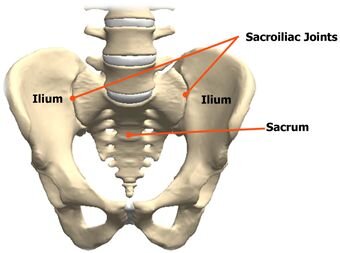Is Sacroiliac Joint Disorder Causing Your Back Pain?
Low back pain is very common and affects approximately 70 percent of people in their lifetime, according to an article in the American Journal of Physical Medicine and Rehabilitation. But low back pain is not always a result of a spinal issue. The sacroiliac joint (SIJ) often can be the pain generator and may be missed if all of the focus is on the lower spine. Studies have shown that in 13 to 30 percent of individuals with chronic low back pain, the sacroiliac joint was found to be the source of their pain.The sacroiliac joint is wedged shaped and joins the spine to the pelvis. The sacrum and iliac bones are held together by a collection of strong ligaments. There is relatively little motion at the SI joints. There are normally less than 4 degrees of rotation.This time of year, I have a number of patients who have started to work in the yard after months of hibernation. They come to the office with low back pain. However, more often than not, it is the SI join that is causing the discomfort. Too much movement in the SI joint can cause the pelvis to feel unstable and this leads to pain. Pain from too much motion is typically felt in the lower back, hip and may radiate to the groin area. On the other hand, too little movement can cause muscle tension, pain and may limit mobility. Pain is felt on one side of the low back or buttocks and can radiate down the back of the leg.The chiropractic treatment goal for SI joint pain is to use a method that is tolerated by the patient and yields the best outcome. Every patient is different, therefore we use different methods depending on the patient. We will also stress muscle relaxation by stretching the hamstrings, the adductors and the muscles next to the lumbar spine. We also encourage you to practice core strengthening exercises that help stabilize the SI joint. You can strengthen abdominal muscles with trunk curls and exercise ball sit ups, and work back muscles with arm/leg raises or the cat/cow movement. If we diagnose you with SI joint dysfunction, we will go over all of these exercises with you in the office.

